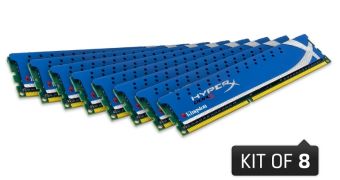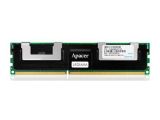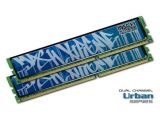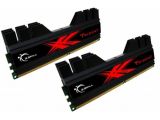Due to an only partially-foreseeable string of events, it so happens that, this year, random access memory (RAM) is the most convenient of purchases on the consumer tech market.
The winter holiday shopping season is more or less upon us already, so, naturally, people are trying to decide how to make the best of it.
By extension, many people are going to want to buy something new for their computer and, this year, they may as well take a shot at a new DDR3 module or two, or four or even eight.
This isn't about any one product either, but about computer memory as a whole.
Basically, RAM is very cheap right now, after dropping in price almost constantly over the past year.
Coupled with how RAM was already quite cheap even this time last year (2010), December 2011 is going to be the ripest time for buying a big and strong new kit.
Obviously, there are many offers out there, the same way there are many companies who make such things.
This makes it easy to get lost in a sea of so-called promotions as each company and retail store has different quotes and deals.
Fortunately, it is more or less impossible to go wrong, because the average price of memory is, right now, about half of what it was between one and two years ago, or close enough that the difference doesn't matter.
Yes, that is just the way things are, as proven by how 4 GB is basically the standard capacity on notebooks right now.
Also, one will be hard-pressed to find a recent desktop product announcement that focused on modules with capacities smaller than 4 GB.
If this sounds hard to believe, just read this small piece that clearly says how 4 GB modules are priced, on average, at under $20.
DRAM makers were too successful for their own good
The primary cause for this oddly convenient situation (though DRAM makers are anything but pleased) is the rapid advancement of the technologies used in the making of the chips that modules are composed of.
The major DRAM makers jumped quite quickly to smaller manufacturing nodes last year, so fast, in fact, that they drove themselves into a corner.
With the speed of advancement leading to more and better DRAM chips being made, inventories grew and grew as older chips didn't sell, until stockpiles left demand behind by a metaphorical mile.
The seriousness of the phenomenon became apparent during the second half of 2010, especially in the fourth quarter.
Since then, manufacturers have been of a single mind in their struggle to reduce those inventories.
Alas, even with the constantly flagging prices, sales still refused to climb, likely due to market saturation.
Games are to blame as well, in a good way
There is no question that the newer modules are better, in every way, than what consumers bought a couple of years back and which, in many cases, are still found in their PCs even now.
This isn't enough of a selling point on its own, however, not with even the most recent games turning out to have no problem running on older systems, even DDR2 if there is enough of it available.
Furthermore, most titles were developed for the console as well as for the PC, which has a limit to what it can cope with, so this probably played a key part in the optimizations that let recent titles run smooth on less horsepower.
With this distinct lack of a reason to upgrade a PC's memory, the market for new RAM was left with little besides those customers that built a new PC from scratch, using one of AMD's or Intel's new processors.
Needless to say, those consumers were unable to buy demand on their own, so suppliers did the only thing they could: cut chip prices every week, if not every day, which, in turn, made modules and kits sell for less and less, until an 8GB kit sold for about as much as a 4 GB kit sold last year, and in some cases for even less.
That situation holds true even now, hence why the holiday savings may as well be spent on these things (it probably won't even take all the piggy bank funds).
Other computer parts just aren't as appealing
There is another reason to enforce the status of RAM as best deals for this winter, as far as the IT market goes anyway: comparison.
All other computing components simply aren't as convenient, not Intel's Sandy Bridge-E CPUs (which, while powerful, we found to be a bit too expensive in our review), not the still pricey SSDs (even if they can be set on fire and still work afterwards) and definitely not HDDs which, according to some of our readers, jumped to double prices or more (not just 10%) after the floods in Thailand shut down most factories and left only two months of supply left.

 14 DAY TRIAL //
14 DAY TRIAL // 


